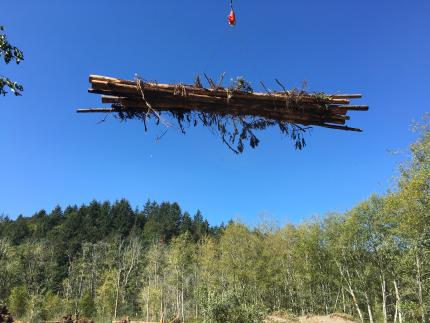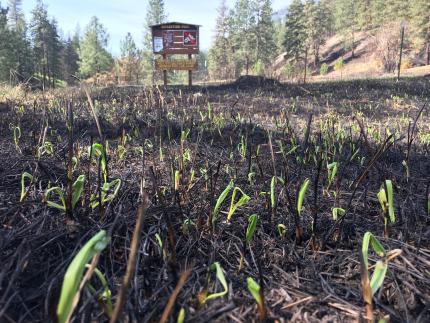
Actively managing healthy forests is a major part of the department's goal to ensure Washington's natural resources continue to support wildlife populations and local communities for generations to come. Through local partnerships and with support from the state legislature, WDFW uses different management tools to restore forests to historic conditions. Restored forests decrease the risks from severe wildfires, improve forest health and habitat for fish and wildlife, and protect homes and local communities. It is an ongoing process and regular maintenance is needed even after work is completed, but restored forests are valuable for fish and wildlife and align directly with the department's mission.
The Department uses a variety of different tools to achieve forest health goals, often depending on the current conditions of the landscape. These tools include fuel breaks, prescribed burning, and forest thinning. WDFW's natural resource management teams plan and review different approaches to address potential risks and confirm that project outcomes are consistent with species management objectives.
Read our latest blog post to learn more.
For more details about the Department's forest health and management work, check out the WDFW forest management story map, which outlines the projects conducted throughout the state.
Learn how WDFW works with partner organizations such as the Rocky Mountain Elk Foundation to restore forests and enhance habitat at the Oak Creek Wildlife Area in their Restoring Elk Country video.
Fuel breaks
A fuel break is a strip of forest with a low amount of fuels on the ground and no low-hanging branches on surrounding trees. If a wildfire burns through a fuel break area, it tends to drop lower to the ground and lose some intensity, creeping more slowly across the landscape. Creating fuel breaks in a forest can help crews contain a wildfire before it gets out of control and limit damage to the area.

Prescribed burning
Prescribed burning is used to keep forests and habitats healthy, reducing the danger and impact of wildfire in those areas. Potential wildfire fuels are removed with low intensity, low heat fire, restoring quality habitat for wildlife in the area. Prescribed burns mimic natural historical fire cycles in these ecosystems, and within a few months after the burns, vegetation returns and wildlife move in to browse on the newly restored forage.
Forest thinning
Thinning is one of the most important tools WDFW foresters have for forest restoration and health. Thinned forests are more resilient against severe wildfire damage and provide better habitat and forage for wildlife species in Washington.
The department approaches forest thinning a two different ways: commercial thinning and non-commercial thinning. Commercial thinning is conducted in partnership with timber companies, and provides support for local communities by contributing directly to the economy. With non-commercial thinning, the small trees involved in the process have little to no economic value, and work is funded by the state legislature or with grants from partners.
In remote areas, slash piles from thinning are often left on site to decay due to the remaining trees not being strong enough for prescribed fire treatments. However, the department does burn excess fuels along major roads and near structures to reduce the risk of severe wildfire. Thinned forests must also be maintained so they can remain healthy and provide for fish and wildlife in the area.
This video shows how thinning is utilized on WDFW lands.